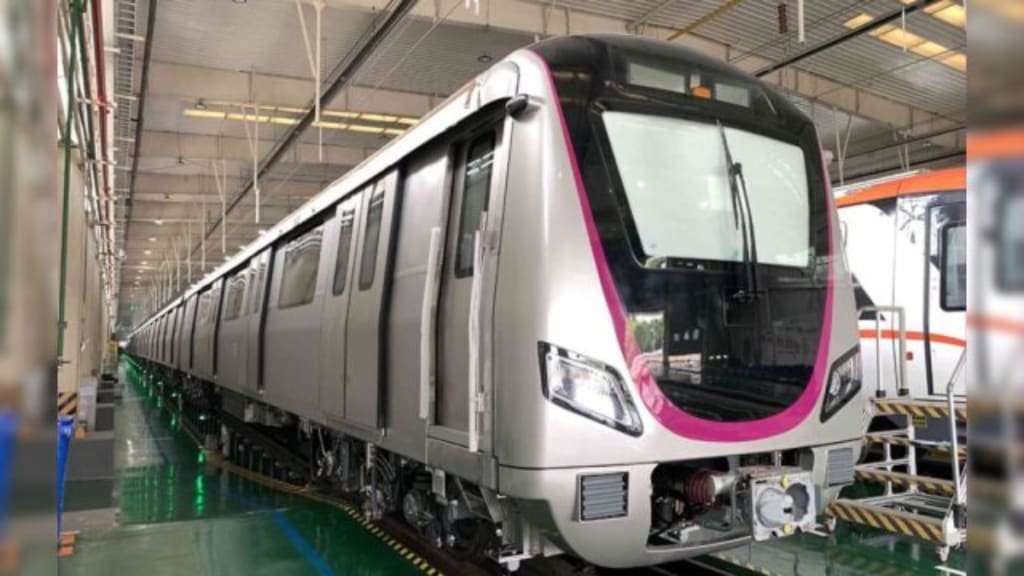The first prototype of the distance-to-go (DTG) train, made in China, has arrived at the Peenya depot, marking a significant step toward enhancing the Bengaluru Metro service. This new six-coach DTG train is designed to alleviate the heavy congestion on the Purple Line and Green Line, specifically between Whitefield and Challaghatta, and Silk Institute to Madavara, respectively.
Testing and Certification Process
According to Bengaluru Metro Rail Corporation Ltd (BMRCL), the prototype will undergo a series of rigorous tests before it can be launched for passenger operations. These tests include static and electrical circuit evaluations followed by dynamic tests on the mainline.
The train is part of a larger order placed by BMRCL with China’s CRRC Corporation to supply 216 new coaches for the Phase 2 expansion project. This includes the Purple Line (Line-1), Green Line (Line-2), and Yellow Line (Line-3), covering a total of 73.95 kilometers. Out of these, 126 coaches (21 six-coach trains) are dedicated to the Purple and Green Lines, while the remaining 90 coaches (15 six-coach trains) will be allocated to the Yellow Line, which runs from RV Road to Bommasandra.
In compliance with local manufacturing norms, CRRC has partnered with Kolkata-based Titagarh Rail Systems Ltd (TRSL) to produce these trains domestically. While the initial prototype was delivered from China, the remaining 20 trains will be manufactured locally at Titagarh Rail Systems’ Uttarpara facility.
BMRCL officials have confirmed that the first DTG train from TRSL is expected to arrive in the last quarter of this year, with the delivery of all trains for the Purple and Green Lines expected to be completed by the first quarter of 2027.
In the meantime, TRSL has dispatched its first driverless trainset for the Yellow Line, which is expected to arrive at the Hebbagodi depot by January 20. The prototype train from China was also delivered to the depot in February of last year.
BMRCL is now exploring the possibility of beginning operations on the highly anticipated Yellow Line, which will connect the Electronic City corridor with two trains. Officials expect this project to provide much-needed relief to commuters in one of Bengaluru’s busiest regions.
With the new DTG trains set to revolutionize Bengaluru’s metro services, the Phase 2 expansion promises to further ease traffic congestion and improve the overall travel experience for the city’s rapidly growing population.

